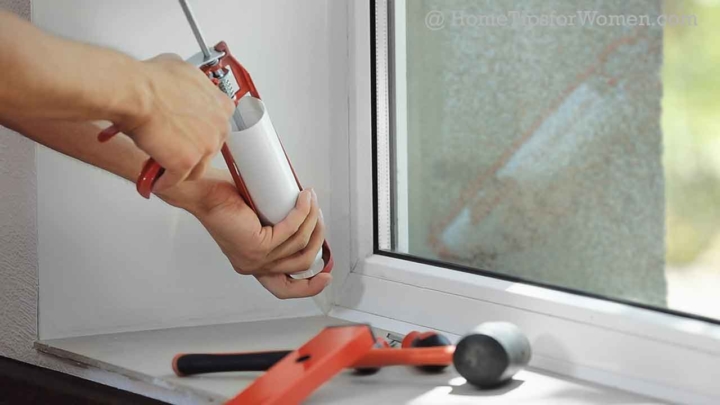Caulking is a material used to seal small gaps (joints or seams) between materials used in home construction. The goal is to prevent leakage through these gaps. In houses, the leaks can involve air moving between a home's conditioned interior areas and unconditioned space like the attic. Water leaks also happen in houses, primarily around plumbing fixtures in kitchens and bathrooms.

According to Wikipedia, the oldest form of caulking was used on wooden boats and ships. They used fibrous (wood) materials to fill the gaps in the wedge shaped seams. Caulking has changed a lot since these days so let's explore the most common questions homeowners have when planning this project.

What is Caulking Used For?
What is the Difference Between Caulk and Sealant?
Many homeowners arrive at the store and are unable to pick the right caulking (see below). You'll save time and money by reading Caulking Confusion: How Many Types of Caulk are There? before you head to the store.

What Kind of Caulking Do You Use in a Bathroom?
Should You Fill a Bathtub Before Caulking?
Where possible, it's also a good idea to add weight to a shower base before caulking. With my handyman business we had to redo a shower because the husband weighed 240 lbs. His weight lowered the base exposing a thin gap which allowed water to leak out of the shower … not good.
How Often Should Bathroom Caulking be Replaced?
You should also replace bathroom caulking if you see:
> Signs of cracking, peeling or there are missing pieces.
> Any signs of mold or mildew which can affect the health of family members.
These problems are often due to using a sealant that wasn't waterproof so be careful to buy a waterproof caulk or silicone meant for bathroom use.

What type of caulking is best for windows?
This article, Caulking Windows Inside and Outside, offers more details … and this article, Where Do I Need to Caulk Windows, identified where you don't want to caulk windows.
How often should you caulk your windows?
How often you caulk windows in an existing home depends on several factors:
> The quality of the caulk last used. This is wear spending a few more dollars on a higher quality material will save you time and … time is money.
> The quality of the last job. That's why it's so important to do a good job preparing the surface to be caulked, to make sure it adheres well.
> Sometimes you might feel a draft from a window. That's when you'll want to consider recaulking, weatherstripping or maybe it's time to upgrade to double-pane win

How Do You Apply Caulking?
> Buy a quality caulk that meets your requirements.
> Take care removing old caulk and cleaning the surface so the new caulk will adhere properly.
> Using a caulking gun (tube or can for small projects), apply a bead of caulking along each seam you want to protect.
> Tooling is the term used to smooth out the caulk so it looks great and covers the seam completely.
Is It Bad to Caulk Over Old Caulk?
It's also not a great idea to caulk over grout. You should re-grout spaces between tiles or where the bathtub connects to the floor.
Why Does My Caulk Keep Cracking?
> Indoors caulk cracks because the surface wasn't cleaned properly, the gap was more than 1/4 inch in width or depth, too thin a bead of caulk was laid down or the caulk was before it had fully dried, or it was paintable.
> Outside cracks can happen for the reasons above or when the temperature of the air, the surface or the caulk was lower than 40 degrees Fahrenheit.





Leave a Reply